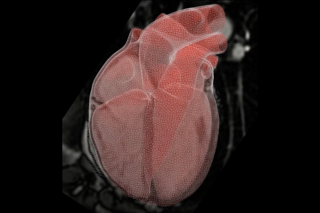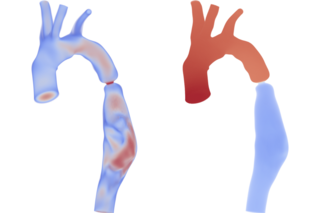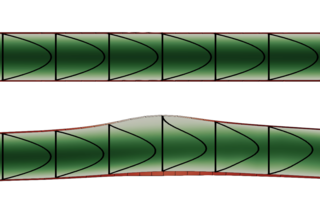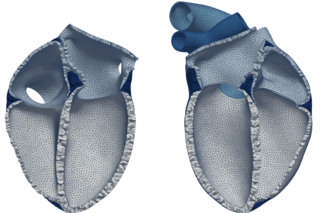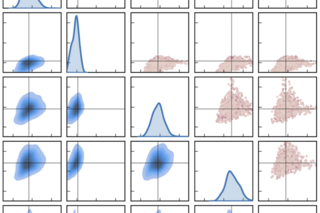-
Cardiac Solid Mechanics
Study how cardiac tissue deforms and responds to physiological conditions (e.g., exercise, pregnancy) and diseases (e.g., hypertension, myocardial infarction).
-
Cardiovascular Fluid Dynamics
Analyze the flow of blood within the body. Fluid dynamics are essential in developing tissue-engineered vascular grafts, aneurysm formation, and congenital heart diseases.
-
Growth and Remodeling
Understand and predict long-term tissue adaptation in regeneration and disease progression to identify patients at risk and enable personalized therapies.
Approach and tools
-
Finite Element Simulations
Fuse multi-modal imaging data (e.g., MRI, CT, ultrasound) with measurements (e.g., blood pressure, ECG) to generate 3D continuum models of patients’ hearts and blood vessels.
-
Reduced Order Modeling
Physics-based (e.g., 1D/0D fluid dynamics) and data-driven (e.g., POD) models allow fast repeated model evaluations (e.g., optimization, parameter estimation)
-
Uncertainty Quantification
Accounts for variations in input parameters and boundary conditions to quantify the reliability of our findings by providing probability distributions of our predictions.
Collaborators
- Stuart Campbell, Yale (Biomedical Engineering)
- James Duncan, Yale (Biomedical Engineering, Radiology & Biomedical Imaging)
- Jay Humphrey, Yale (Biomedical Engineering)
- Dana Peters, Yale (Radiology & Biomedical Imaging)
- Albert Sinusas, Yale (Cardiovascular Medicine, Radiology & Biomedical Imaging)
- John Stendahl, Yale (Cardiovascular Medicine)
- Jason Szafron, Carnegie Mellon (Biomedical Engineering)
Funding
Current
- NIH T32HL098069 (PI Sinusas)
- NIH R01HL175990 (PI Sinusas, $129,560), 2025 - 2029
- NIH R00HL161313 (PI Pfaller, $747,000), 2024 - 2027
Completed
- NIH K99HL161313 (PI Pfaller, $324,432), 2022 - 2024
- Stanford MCHRI Instructor K Award Support (PI Pfaller, $100,000), 2022 - 2024
